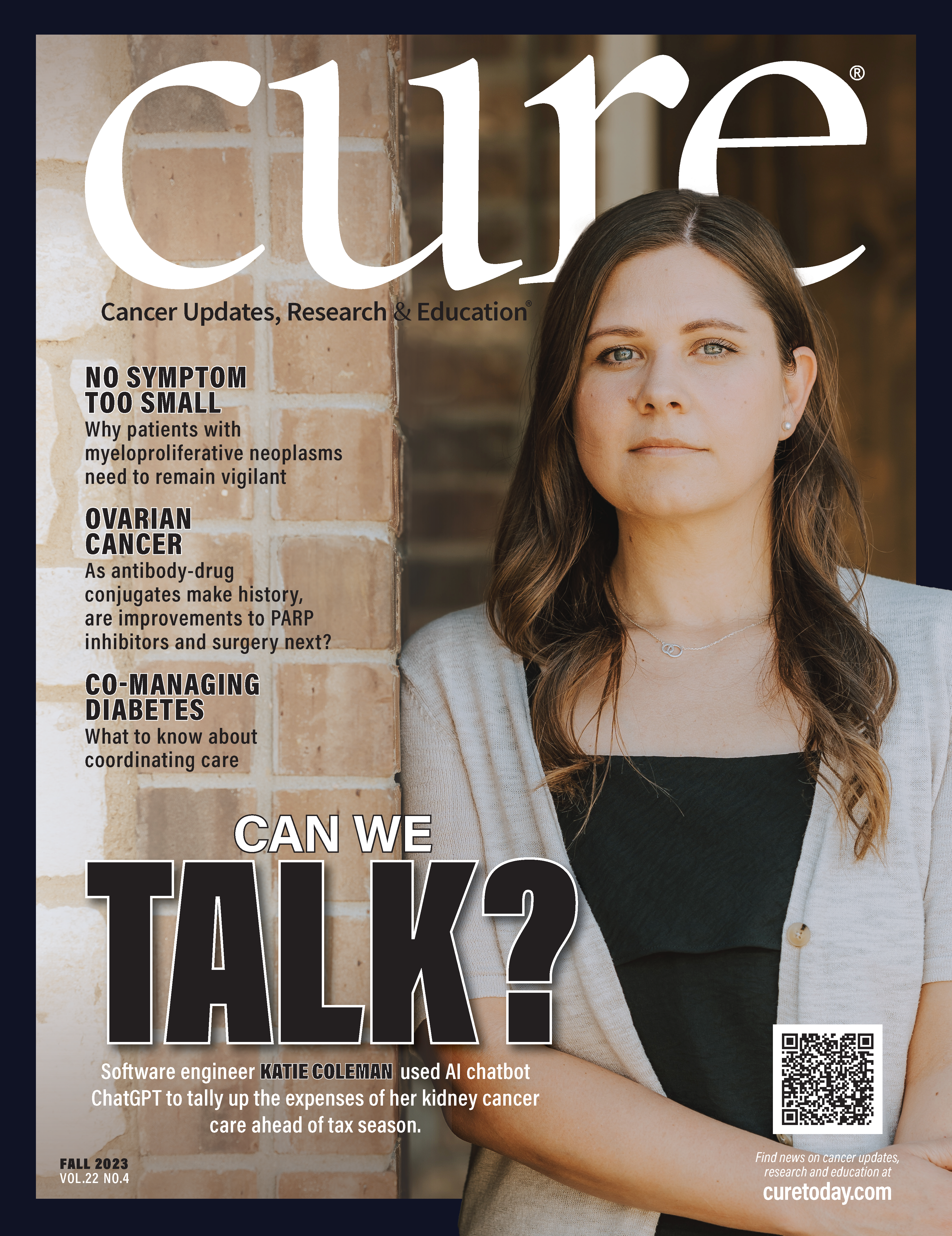News
Article
CURE
Post-Mastectomy Pain Syndrome: What Patients Need to Know
Author(s):
More than half of patients may experience PMPS, a type of chronic nerve pain, following mastectomy and breast surgery.

A common, but not often talked about, side effect of mastectomy is post-mastectomy pain syndrome (PMPS). This type of chronic nerve pain, which can feel like burning, aching or shooting pain, may affect more than 50% of patients after mastectomy and breast surgery.
In the worst cases, PMPS can be extremely debilitating and damaging to people’s lives, resulting in an inability to work, the need for regular pain injections and chronic narcotic use.
In past years, when concern was predominantly about patient survival, pain was often ignored by the medical community. Patients were frequently told it was normal, would go away on its own or was “in their heads.” This mentality is shifting as more focus is rightfully placed on quality of life — and as surgeons learn more about nerve damage. Furthermore, advancements in modern medicine can now help mitigate and reverse post-mastectomy pain.
If you are experiencing chronic pain post-mastectomy that lasts longer than three to six months and you’ve tried physical therapy, pharmacological pain management and regional anesthesia, you may have nerve pain and/or a neuroma (a tangled mass of nerve endings and scar tissue) and could be a candidate for reparative surgery.
What Causes PMPS?
During a mastectomy, nerves that run toward the armpit area and the inner and outer chest are sometimes cut, stretched or pulled. With some mastectomies, nerves in the collarbone area can also be affected.
While cutting nerves is an inevitable and necessary part of surgery, because of the important role they play in the body it can be problematic
if they aren’t managed adequately. Peripheral nerves relay information between your brain and your body that allow you to move and feel. When cut nerves aren’t managed or repaired, they may grow uncontrollably and turn into a painful neuroma.
How Does Nerve Repair Surgery Work?
After nonsurgical options to treat PMPS have been exhausted, surgical intervention may be considered. If trigger points are found on physical exam that have not responded to other treatments, there may be trapped or damaged nerves that are generating constant pain.
There are a variety of surgical options for the treatment of entrapped, damaged nerve endings. Initial steps include surgical identification of the problem site, release of the nerve and removal of the abnormal nerve ending or scar until a normal, healthy segment is reached. Next, the fresh nerve ending is managed either through reconnection to another healthy nerve or to a nerve allograft, using a special nerve cap or replantation into surrounding body tissue or muscle.
It’s important to note that if a neuroma is simply removed and nothing is done to manage the nerve, another neuroma can form and the pain can come back; this can happen as early as three to six months post-surgery. When nerves are properly addressed, pain relief can be instant — even as nerves heal and regenerate. It’s also important to keep in mind that every person is different and that nerves are some of the slowest-regenerating tissues in the body, growing approximately 1 millimeter per day.
What Can Be Done to Mitigate PMPS?
If you haven’t undergone breast surgery yet, here are some questions you should ask during your preoperative appointments with breast surgeons and plastic reconstructive surgeons (preferably, who work together as a team) to help you learn more about their experience in this area: If you’ve already had a mastectomy or breast surgery and believe you may be experiencing PMPS, consider asking your plastic reconstructive surgeon if you should see a pain specialist, if physical therapy could help or if you should consider surgical options. If you’re experiencing chronic pain in an area that was previously affected by breast cancer, an appropriate oncologic workup should be conducted.
Given the negative impact PMPS can have on quality of life, and its prevalence, all patients should be treated as if they are at risk for developing it.
It’s imperative for patients and providers to be aware of both the preventive and treatment options available. I believe that no matter how perfect a breast reconstruction looks, it’s successful only if the patient is pain free.
For more news on cancer updates, research and education, don’t forget to subscribe to CURE®’s newsletters here.





